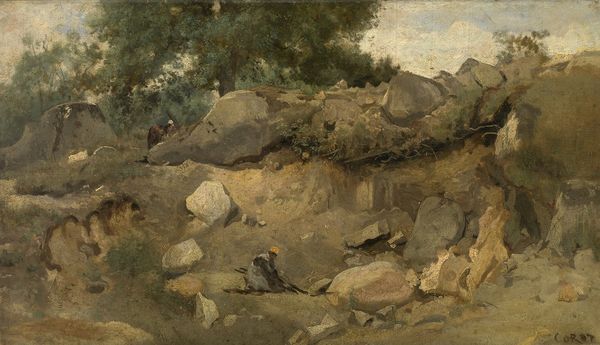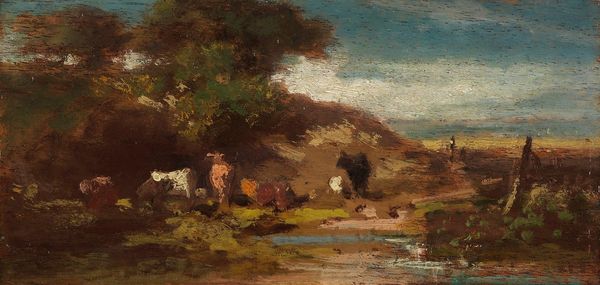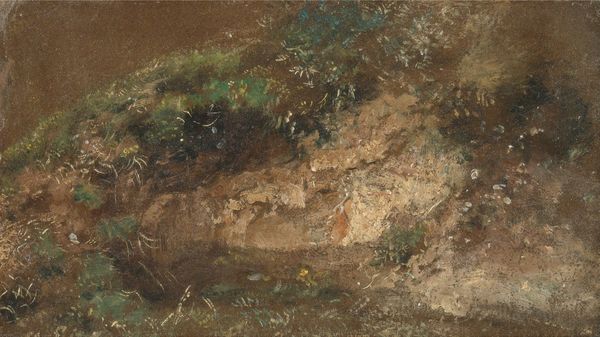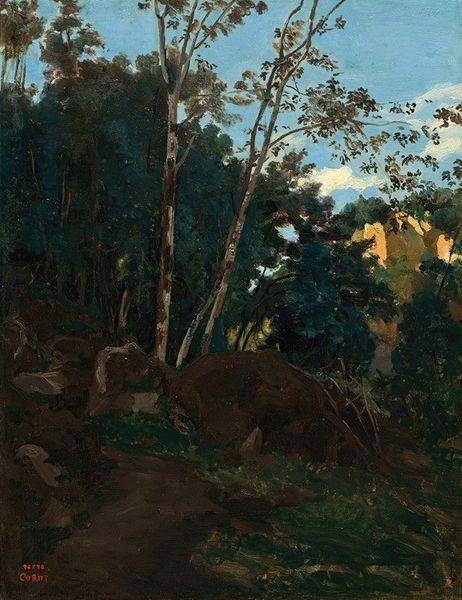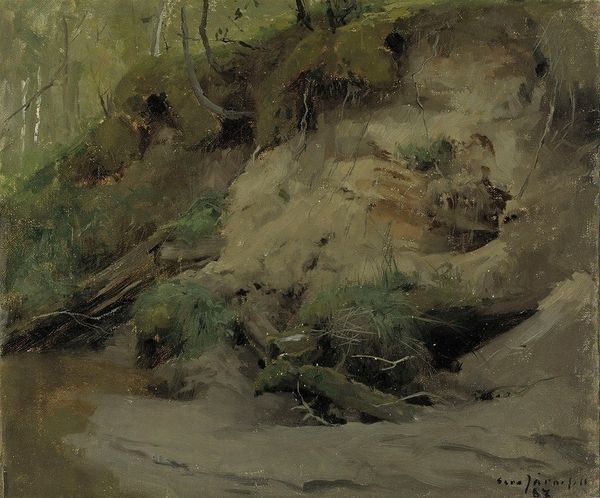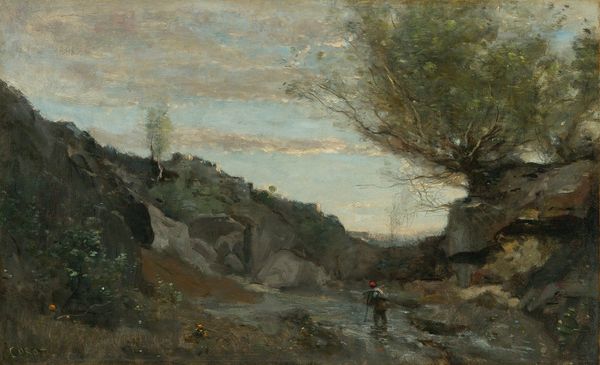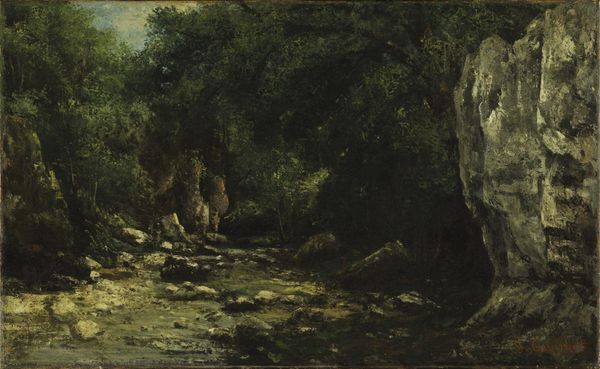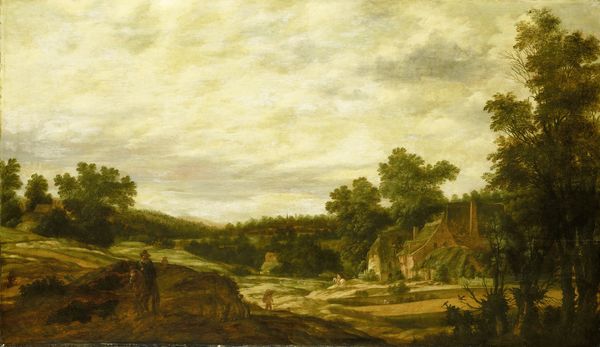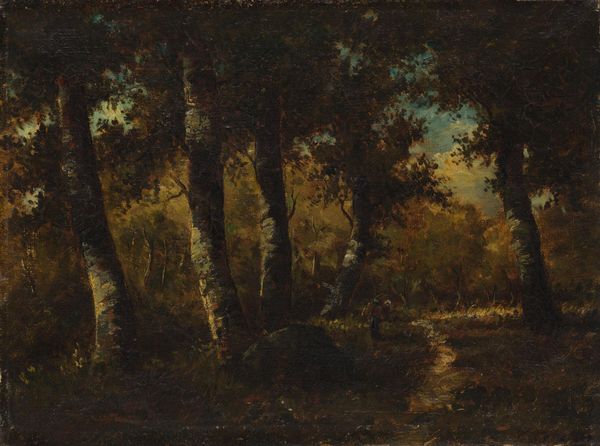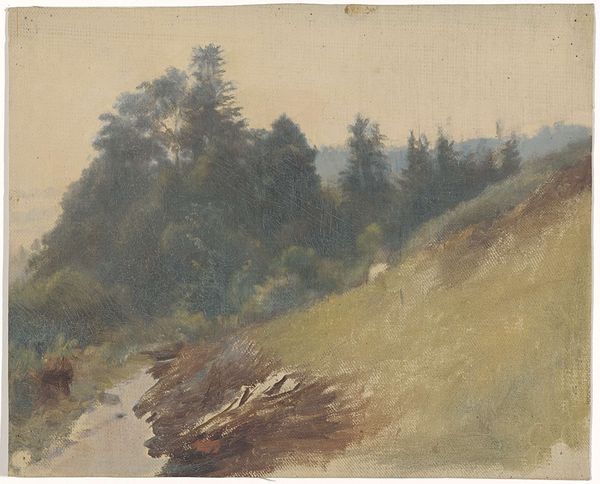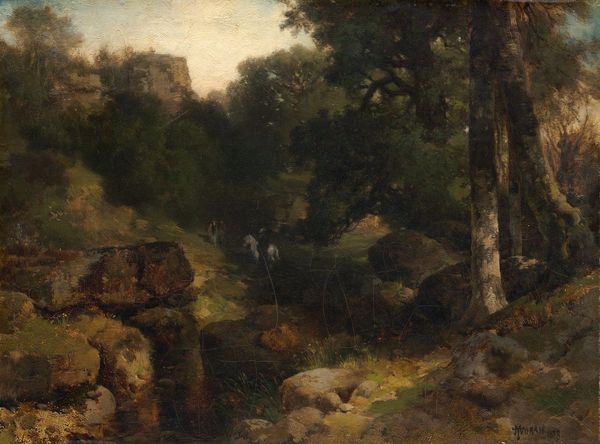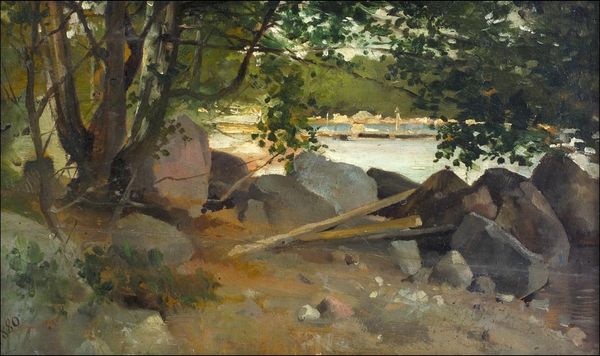
Dimensions: height 22 cm, width 40.5 cm, depth 4.5 cm
Copyright: Rijks Museum: Open Domain
Curator: Before us hangs "Meadow Landscape," an oil painting by George Hendrik Breitner, believed to have been created sometime between 1880 and 1923. Editor: It’s incredibly evocative; almost claustrophobic. The muted palette and dense application of paint create an intimate yet weighty atmosphere. The materiality really stands out. Curator: Indeed. Breitner was a key figure in the Amsterdam Impressionism movement, known for his plein-air works capturing the everyday realities of urban and rural life. It is fascinating that we often examine the "urban," but works like this offer such insights. Editor: And he avoids sentimentality entirely, doesn't he? He isn't prettifying nature, but rendering it as an unidealized, perhaps overlooked space. It seems that those timber logs function as compositional anchors amid the expressive brushwork. Curator: Absolutely. The roughly textured brushstrokes contribute significantly to the painting's impact. Each stroke operates as a discrete unit while blending cohesively to give off an all-encompassing vision, echoing the style's influence in late 19th century European painting. Editor: It is also interesting how Breitner manages to capture light, though not necessarily sunlight, and imbues that almost somber lighting condition in such interesting strokes. In a similar vein, there appears to be an emphasis on capturing light conditions and immediate sensation rather than a highly-finished product. Curator: His dedication to capturing fleeting moments mirrors a broader artistic trend concerned with social realism, responding to anxieties associated with industrialization and urbanization and expressing concerns for what this changing meant. How do you view its function when hung in a museum like the Rijksmuseum, among works with broader social commentary? Editor: In a way, its presence in such an institution emphasizes the changing perception of leisure spaces amidst industrial development; and these spaces increasingly hold aesthetic and political value and were vital places for a society re-evaluating their positionality to industry. It shows both how values have been reshaped through history, as well as being reshaped themselves now as we analyze these artworks today. Curator: Very insightful, a new way of understanding our place within the art's reflection of social and cultural values and a perfect summation for today’s viewing.
Comments
No comments
Be the first to comment and join the conversation on the ultimate creative platform.
